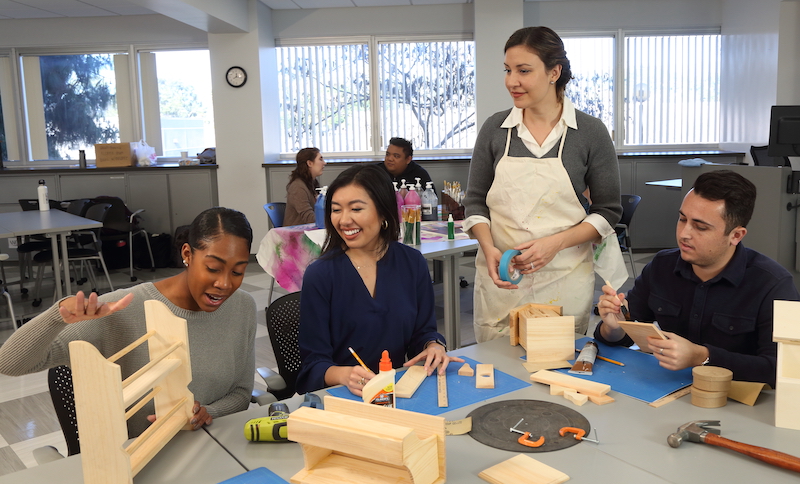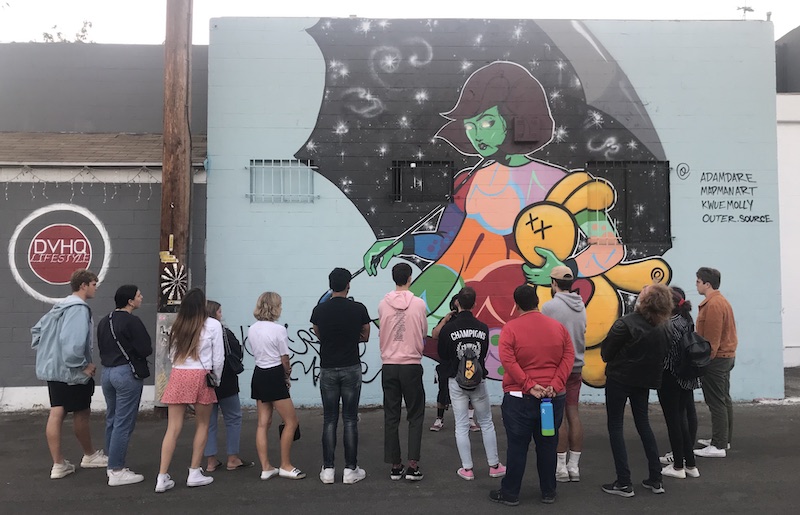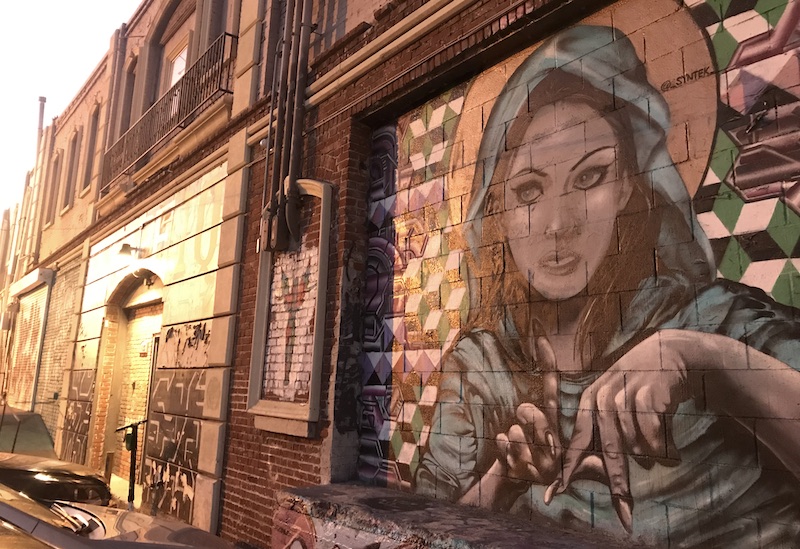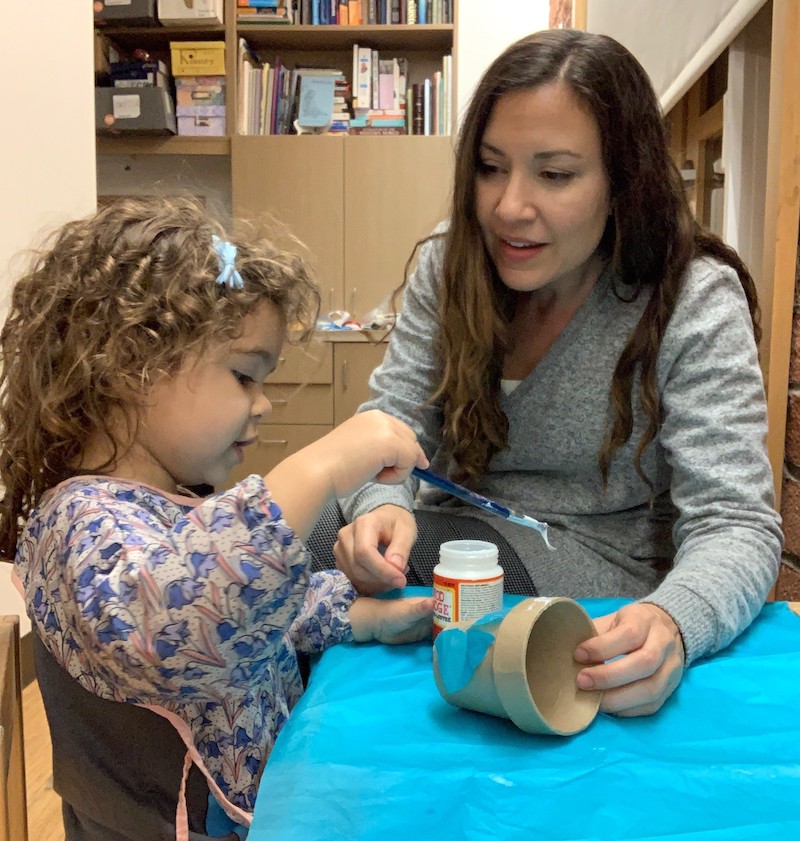The Art of Occupational Therapy
January 30, 2020
For Amber Bennett, arts and crafts have always been meaningful. From constructing doll houses to making stained glass pieces and weaving baskets, Bennett has engaged in creative projects for as long as she can remember
Academics and Courses Faculty Health and Wellness Students
“Engaging in something meaningful to you can contribute to your health.”
For Amber Bennett, arts and crafts have always been meaningful. From constructing doll houses to making stained glass pieces and weaving baskets, Bennett has engaged in creative projects for as long as she can remember.
“For me, arts and crafts have been a hobby, practically since birth,” said Bennett, an assistant professor of clinical occupational therapy at USC Chan.
So when she was asked to teach USC Chan’s hands-on course on creativity and crafts just three years after completing the course herself, she jumped at the chance. Bennett remembers that class as being not only the most fun, but also the most personally influential during her own graduate studies. It led her to realize the impact of art on her own life as well as its therapeutic potential for future clients.
Now, Bennett shares her enthusiasm with her students, introducing them to the importance of arts and crafts in their own occupational therapy practices. While a room full of students constructing jewelry, fussing with sewing machines and drawing with markers and brushes may not look like a typical day in health profession higher education, students in “OT 406: Foundations — Creativity, Craft and Activity Analysis” practice skills that are at the heart of the profession.
Zack Pinto (photographed on the right): “Although I do not craft in my practice as an occupational therapist, I am constantly using activity analysis. As the Manager of Guest Accessibility for SoFi Stadium and Hollywood Park, activity analysis is crucial to understand how guests of all abilities are going to be able to engage in the environment and experience everything it has to offer to the fullest extent. It requires a lot of creative thinking to facilitate the ways people will navigate the space and interact with their surroundings while on-site.” / Photo by Phil Channing
Bennett’s main objectives are for students to learn activity analysis — the process of assessing the requirements of a given activity, the range of skills involved in its performance and the various cultural, social and personal meaning it carries — and to appreciate the profession’s historical and contemporary use of arts and crafts. For patients, the therapeutic benefits of arts and crafts might include developing manual skills, expressing emotions and identities and experiencing a satisfying sense of completion at the conclusion of a project.
“Activity analysis is at the core of occupational therapy, and we could not be OTs without it,” Bennett said. “Arts and craft modalities were used at the birth of our profession. To this day, OTs are using arts and crafts in almost every area of practice.”
More than meets the eye
In addition to her various roles at USC Chan, Bennett also serves as Faculty in Residence at New North Residential College located on the University Park Campus. In this role, she and her family live among freshmen and organize various social events, from conversations over dinner with invited guest speakers, to daytrips and activities around Southern California.
“The purpose of the Faculty in Residence programming is to represent the academic vision of the university in the residential colleges, and to support the huge transition many freshmen face,” Bennett said. “Additionally, it orients students to their new university community, and the greater community and culture of Los Angeles.”
Last fall, for example, Bennett planned a street art walking tour which fused her love of art with her desire to expose residents to a unique aspect of LA culture. They learned about different forms of street art and the artists who create it, heard personal stories about finding community in street art crews and had conversations about ongoing gentrification of long-time street art hubs.
Bennett and fifteen freshmen residents followed Galo Canote, an LA-based graffiti artist of more than 30 years, through Los Angeles’ Arts District / Photo courtesy of Amber Bennett
Bennett and fifteen freshmen residents followed Galo Canote, an LA-based graffiti artist of more than 30 years, through Los Angeles’ Arts District / Photo courtesy of Amber Bennett
Bennett and fifteen freshmen residents followed Galo Canote, an LA-based graffiti artist of more than 30 years, through Los Angeles’ Arts District / Photo courtesy of Amber Bennett
Most who attended were not native Angelenos and were interested to learn more about their new home city. William Higbie, a freshman from Detroit who is studying cinema media studies, was eager to join.
“I was super excited to see it on the schedule,” Higbie said. “I was very curious to see the street art culture in LA as compared to that of Detroit. It was great getting to know Dr. Bennett, the Resident Advisers and other students, and I’m excited to get to know Los Angeles better.”
Even with all her responsibilities, Bennett still finds time to engage in arts and crafts as a valued occupation, which even now has taken on new dimensions of meaning: As the mother of a two-year-old daughter, Bennett is sharing her love of the many facets of art with her next of kin.
Whether as an outlet for creative expression, a means to satisfy curiosity, build new skills or just a fun way to spend an idle afternoon — creating and crafting is not only a fundamental human occupation, it’s an important contribution to the art that makes occupational therapy practice so beautiful.
⋯










